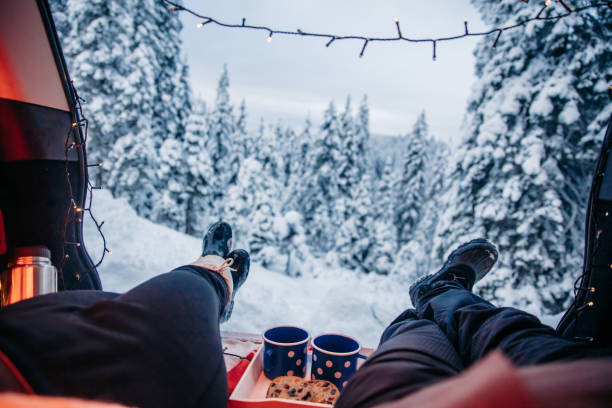In a world where many seek refuge in sandy beaches when winter arrives, a unique breed of adventurers finds solace in the snow-covered landscapes. These winter wanderers are the overlanders who dare to embrace the elements, camp in the wilderness, and discover the magic of a winter wonderland. There’s something truly enchanting about having the vast, snowy wilderness practically to yourself. If you’re curious about the allure of winter overlanding, let’s explore the essentials you need to make this an unforgettable experience.
Winter Overlanding:
Embracing the Frozen Frontier
In a world where many seek refuge in sandy beaches when winter arrives, a unique breed of adventurers finds solace in the snow-covered landscapes. These winter wanderers are the overlanders who dare to embrace the elements, camp in the wilderness, and discover the magic of a winter wonderland. There’s something truly enchanting about having the vast, snowy wilderness practically to yourself. If you’re curious about the allure of winter overlanding, let’s explore the essentials you need to make this an unforgettable experience.
Planning and Preparedness:
Winter overlanding is a venture that demands thorough planning and preparedness. Just as you check the forecast during your summer escapades, it’s crucial to keep a watchful eye on the winter weather. Always be cautious when a severe storm is predicted; sometimes, it’s best to postpone the trip and stay home. Remember, safety comes first in any weather condition. Never embark on a winter overlanding adventure alone. Always inform a friend or family member about your itinerary, so someone knows where you’re headed and when you’ll be back.
Gear and Clothing:
When setting out into the snowy wilderness, your gear and clothing choices are paramount. Staying warm and dry is your top priority. Frostbite and hypothermia are not to be taken lightly; they can be life-threatening. Opt for clothing that incorporates advanced materials like Gore-Tex or similar fabrics, which effectively wick away moisture. Damp clothing can quickly lead to chill and hypothermia. For outerwear, choose coats with nylon shells to break the wind, and consider insulating materials like Thinsulate for added warmth. Layer your clothing during the day, ensuring there’s enough flexibility for comfort. Having extra clothing is a must to change into dry wear at the end of the day. Don’t overlook the importance of sturdy, waterproof boots with rubber soles for good traction.
Shelter and Sleep:
A well-prepared shelter and a warm sleeping system are your best friends in the winter wilderness. A 4-season tent is your reliable companion, featuring solid walls to block wind and shed snow. The full fly over the tent adds extra protection from the elements. A tent with a vestibule is ideal, providing a transition area for storing your outerwear and boots, reducing the snow that enters the main tent. Before setting up your tent, pack down the snow to create a firm base and build a berm around the sides to act as a windbreak. Make sure the tent’s front door is facing away from the prevailing wind. A high-quality sleeping bag is a must, and if you can’t find one rated to the proper temperature, consider using two bags – one inside the other – for added insulation.
Stay Warm and Cozy:
To combat the cold, insulate yourself with a foam mattress or blankets beneath your sleeping bag. Be cautious with tent heaters, as while they are convenient, they should be used with care, and it’s best to avoid leaving them running all night. Heating the tent before bedtime and upon waking up is a safer practice.
Vehicle Maintenance:
Don’t forget your faithful overlanding companion, your vehicle. Before heading out, check your tires, rotate them if needed, and ensure you have spare tires and tire chains if necessary. Test your battery and windshield wipers, and replace them if they show signs of wear. Make sure your antifreeze is at full strength and that you have enough windshield washer fluid. In remote areas, it’s wise to carry a survival kit, including a snow shovel and ice pick, and don’t forget to have a fire-starter kit on hand.
Communication:
Winter overlanding in isolation is a beautiful experience, but safety should always be a priority. Keep your cell phone charged, and be prepared with alternative communication methods, such as a ham radio, NOAA weather broadcasts, or even satellite phones for truly remote journeys.
Winter overlanding is an adventure like no other, where nature’s grandeur takes center stage. It’s a rewarding experience that offers a unique perspective on the season’s beauty. Remember, as with any four-wheeling journey, preparation and a deep respect for the elements are key to a safe and enjoyable winter overlanding adventure.
As an E3 Offroad & Overland member, you get access to TONS of informative offroad and overland articles and content. Sign Up or Log In today and enjoy all of the tools, 200+ lessons and teachings, resources, product discounts, community and entertainment that E3 Offroad / Overland Association offers.

